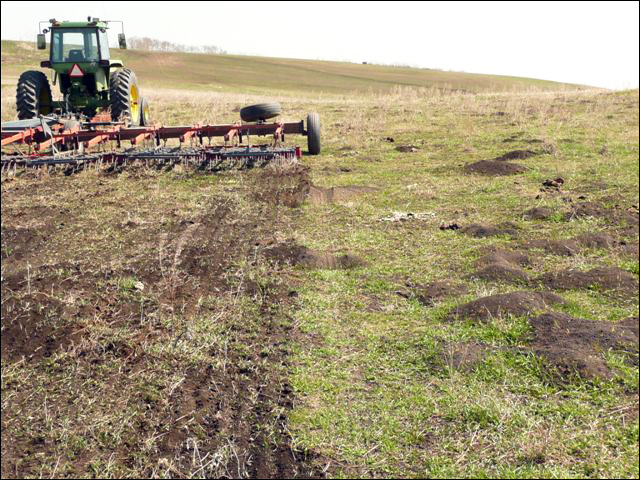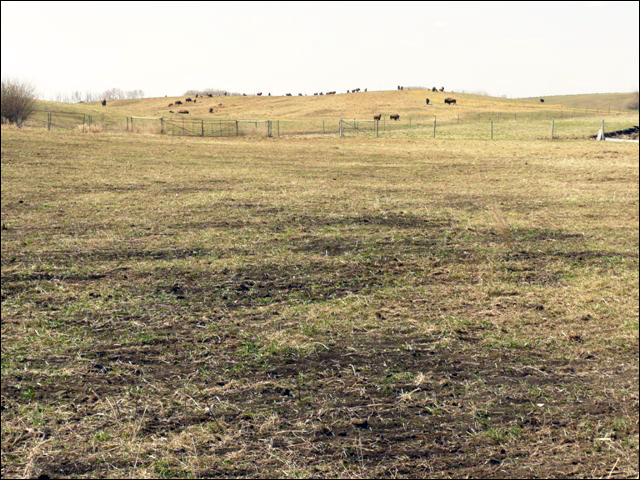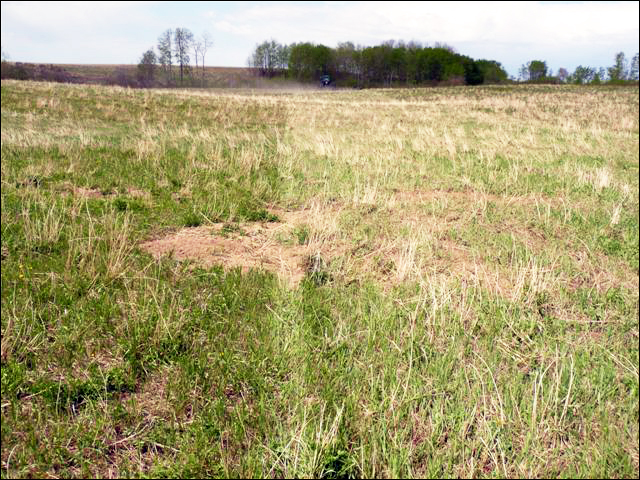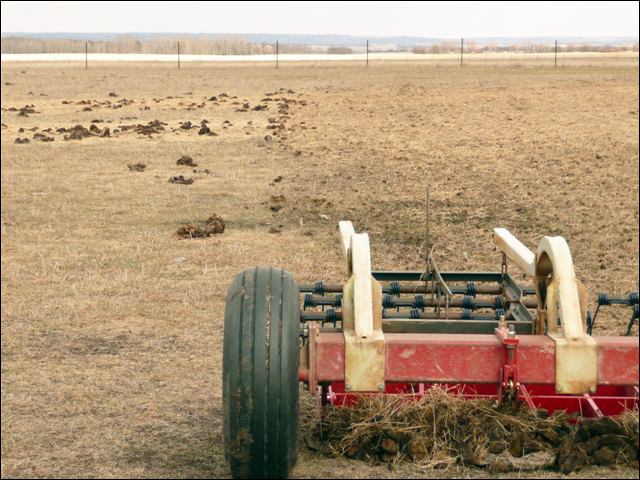Range of uses in hayfields and pasturelands
The Mole Hill Destroyer levels mole, gopher and badger hills but it's also ideal for spreading manure from winter feeding. The Destroyer is the proven solution for grooming:
- hay and pasture land,
- fields used in alfalfa seed production,
- fields being returned to cereal grain production, and
- some crop land.
It can also be used in combination with other equipment:
- with a Valmar, to seed and level at the same time, or
- behind a liquid caddy, to fertilize and level at the same time.
When to use the Destroyer
The Mole Hill Destroyer will deliver impressive results in just one pass on even the roughest fields. For a newly seeded field, with a smooth base, an annual maintenance program is sufficient. On fields that have never been groomed we recommend starting with a double pass, with the second pass at right angles to the first, to establish a smooth base. Once this is done, yearly maintenance will level new molehills and manure piles.
Regular grooming produces the best results. You can groom in the spring, between first and second cut, and in the fall.
In spring you can level until new growth is 6 to 10 inches tall without damaging the hay crop. The weight of the drags is carried on the shoes, which can be set to raise the drags up to 1 inch above the ground (for most uses the drag should be set to 1/4 inch above ground level).
Many producers say that late spring grooming enhances crop growth. Spring grooming will also destroy old-crop alfalfa, which means you won't be cutting and baling old growth, and bales will have higher protein content and contain less dirt. This is very good news if you're a dairy farmer!

First pass on a badly infested unleveled field makes an impressive improvement. Second pass (below) establishes a smooth base for regular grooming.

Regular grooming with the Mole Hill Destroyer keeps fields smooth, speeding up haying, cutting repair costs and reducing down time.

Spring grooming (above) breaks up dry, dead hay from the previous crop, which means you won't be cutting and baling old growth with new.

The Destroyer spreads manure from winter feeding evenly across pastureland, fertilizing the field as it levels.